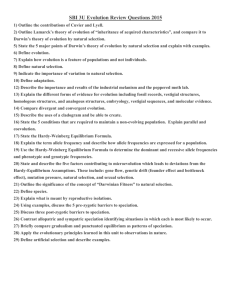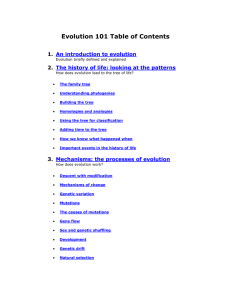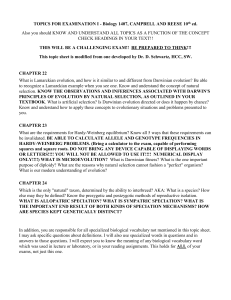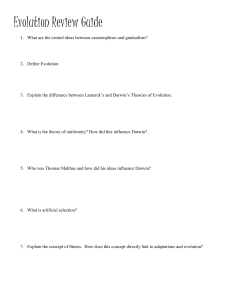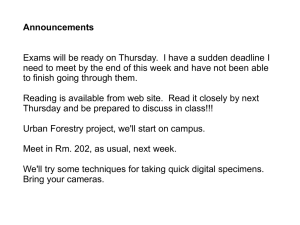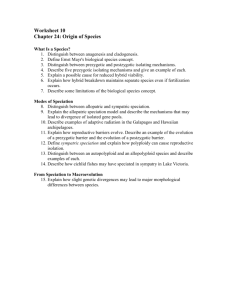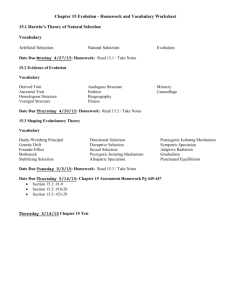Evolution study guide
advertisement
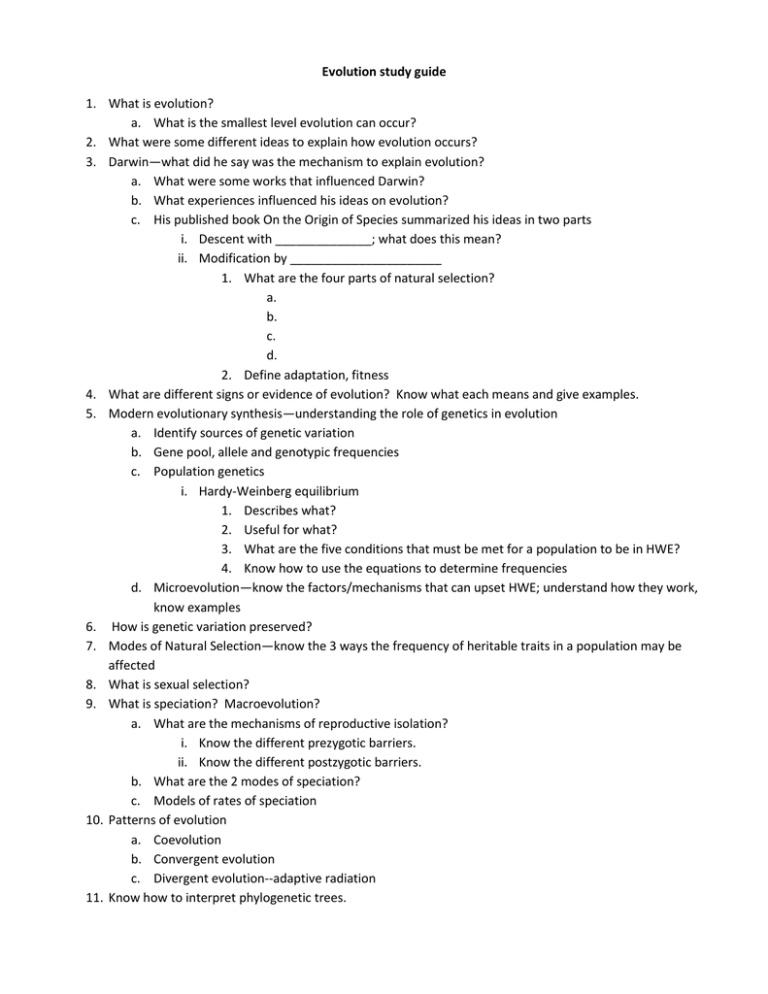
Evolution study guide 1. What is evolution? a. What is the smallest level evolution can occur? 2. What were some different ideas to explain how evolution occurs? 3. Darwin—what did he say was the mechanism to explain evolution? a. What were some works that influenced Darwin? b. What experiences influenced his ideas on evolution? c. His published book On the Origin of Species summarized his ideas in two parts i. Descent with ______________; what does this mean? ii. Modification by ______________________ 1. What are the four parts of natural selection? a. b. c. d. 2. Define adaptation, fitness 4. What are different signs or evidence of evolution? Know what each means and give examples. 5. Modern evolutionary synthesis—understanding the role of genetics in evolution a. Identify sources of genetic variation b. Gene pool, allele and genotypic frequencies c. Population genetics i. Hardy-Weinberg equilibrium 1. Describes what? 2. Useful for what? 3. What are the five conditions that must be met for a population to be in HWE? 4. Know how to use the equations to determine frequencies d. Microevolution—know the factors/mechanisms that can upset HWE; understand how they work, know examples 6. How is genetic variation preserved? 7. Modes of Natural Selection—know the 3 ways the frequency of heritable traits in a population may be affected 8. What is sexual selection? 9. What is speciation? Macroevolution? a. What are the mechanisms of reproductive isolation? i. Know the different prezygotic barriers. ii. Know the different postzygotic barriers. b. What are the 2 modes of speciation? c. Models of rates of speciation 10. Patterns of evolution a. Coevolution b. Convergent evolution c. Divergent evolution--adaptive radiation 11. Know how to interpret phylogenetic trees.


